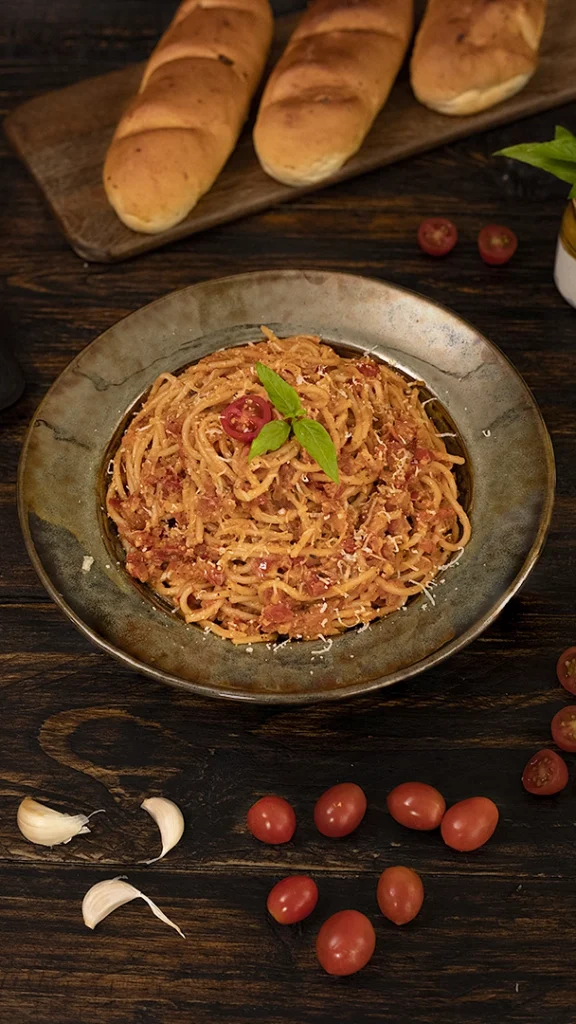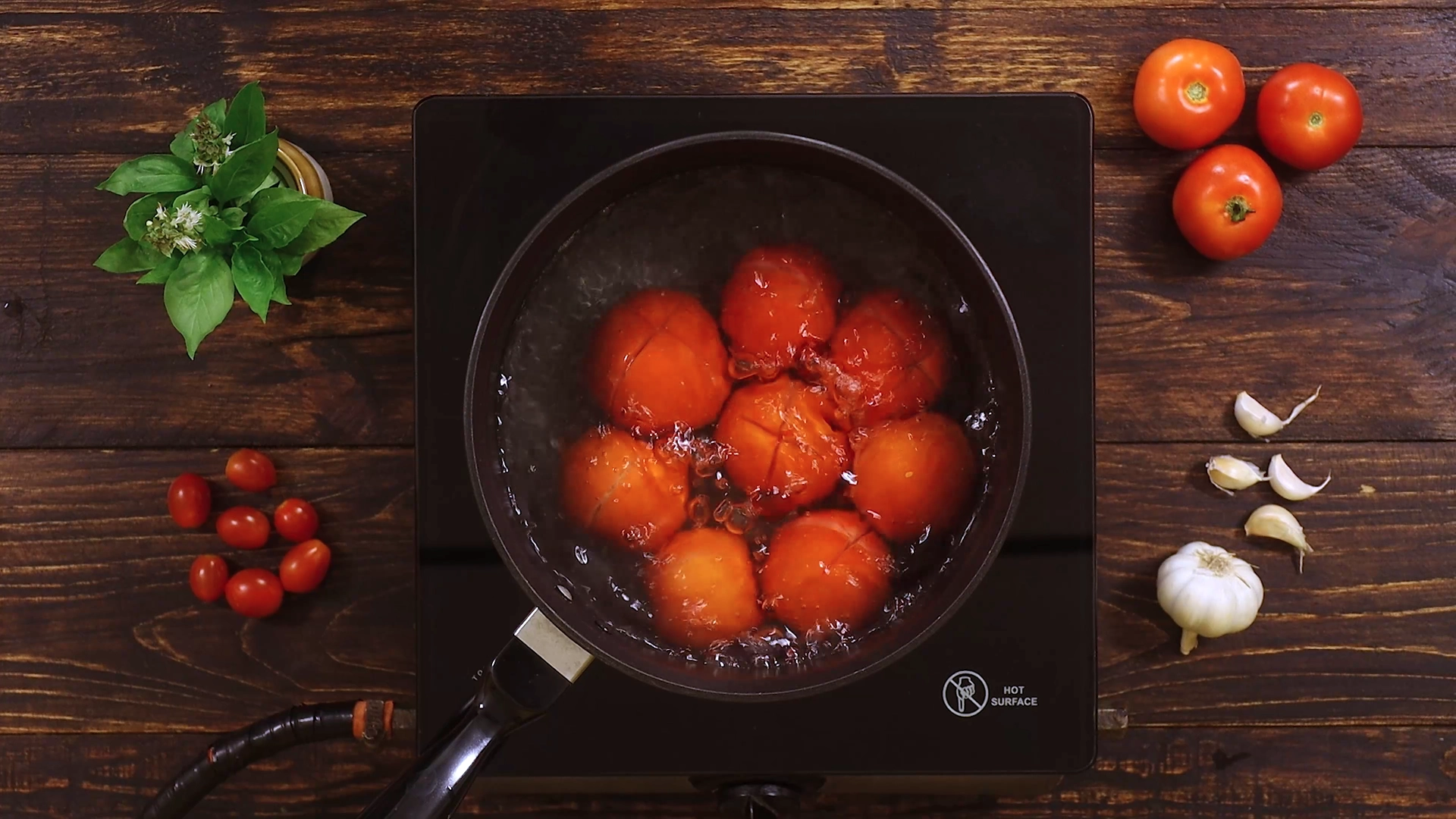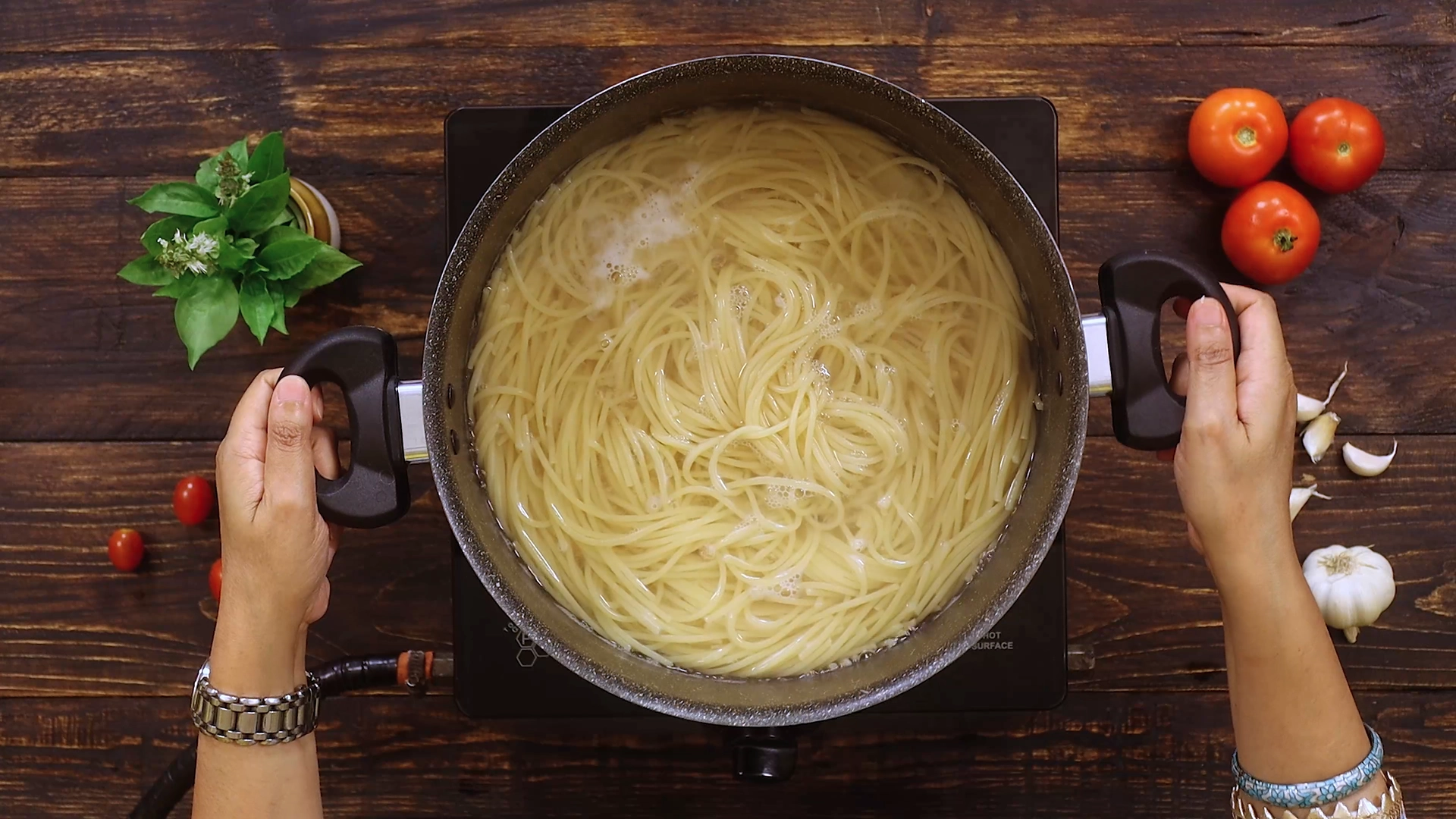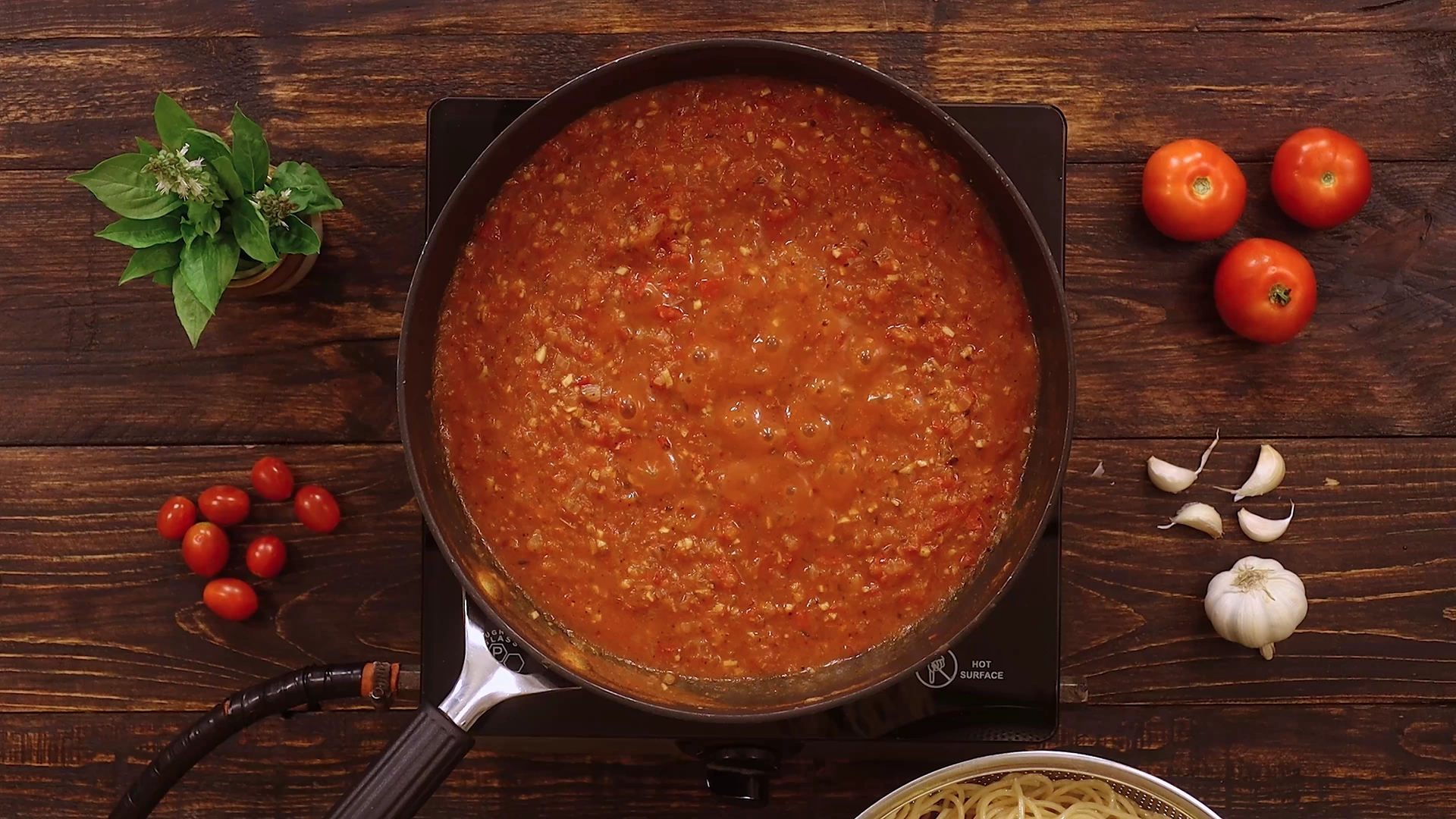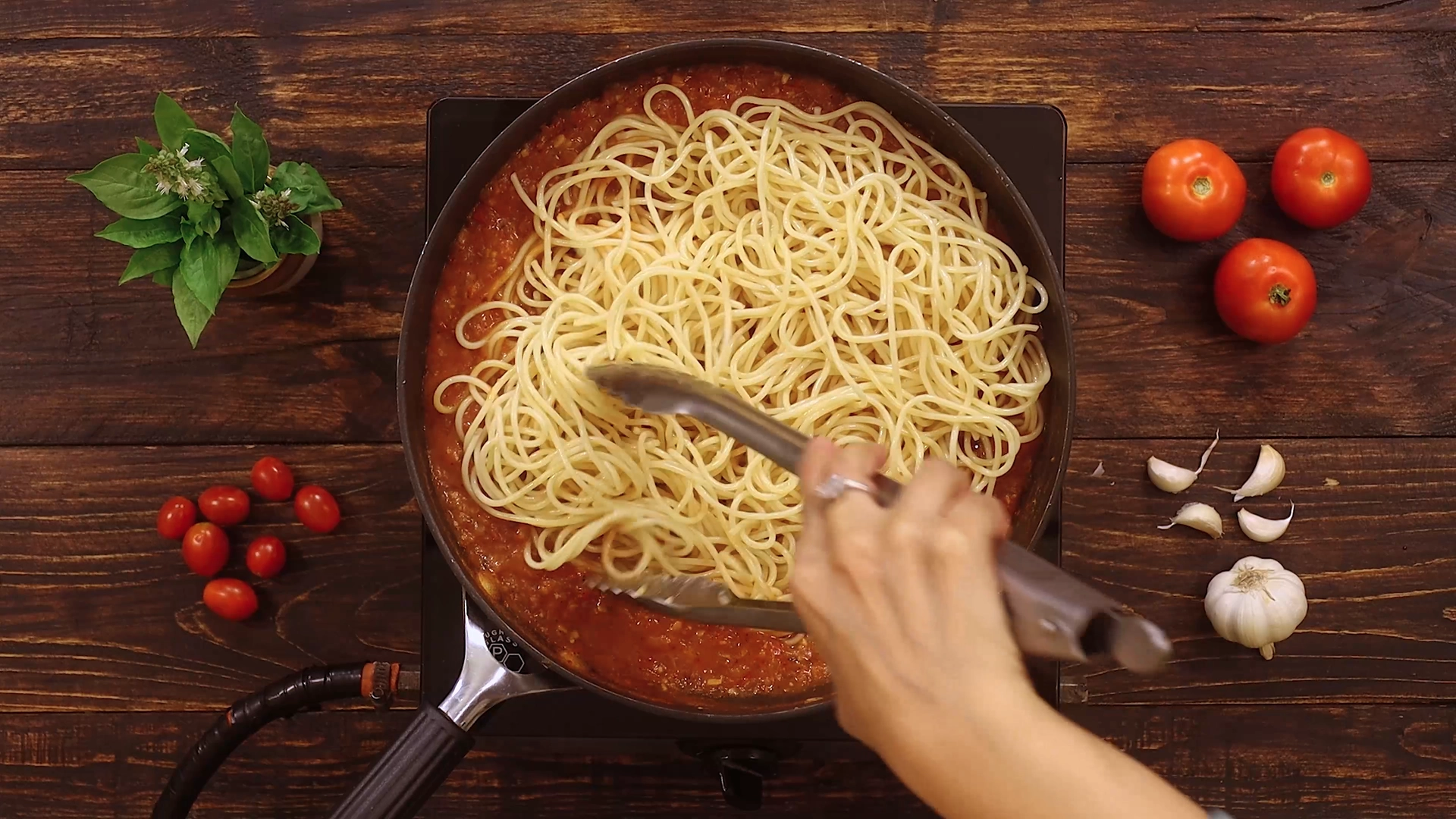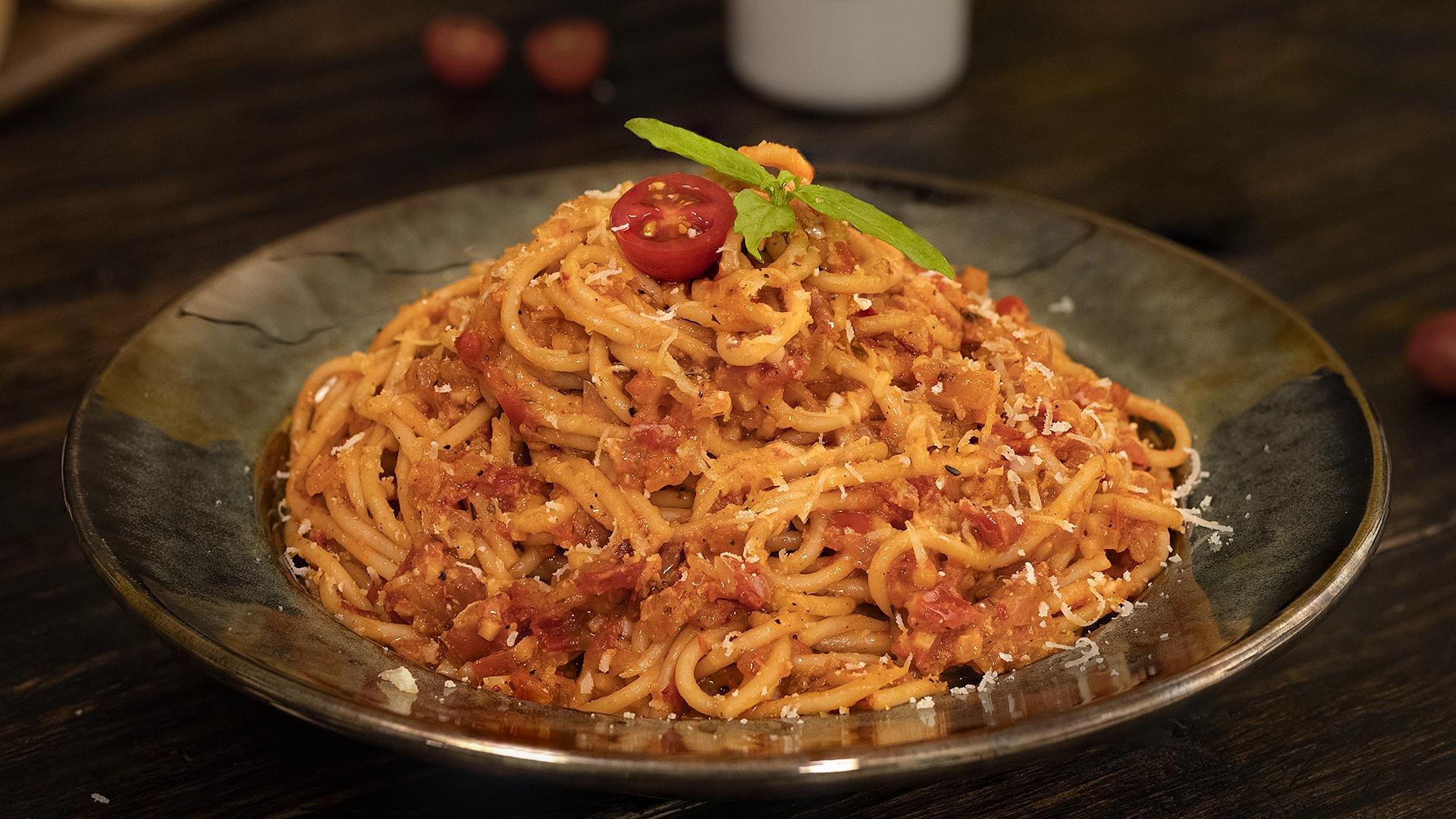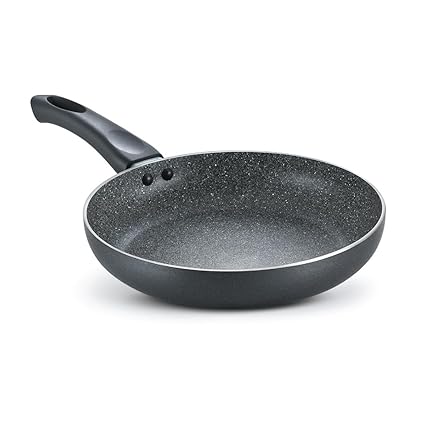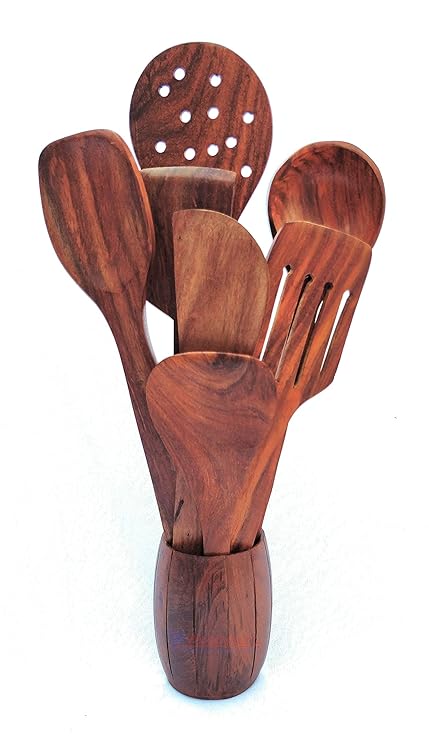Spaghetti is one of the most well-known pasta varieties, loved for its long, thin strands that perfectly hold onto sauces. This dish features spaghetti tossed in a rich and flavorful red sauce made with fresh tomatoes, garlic, and aromatic herbs.
The combination of tangy tomatoes, fragrant basil, and the slight heat from chili flakes makes it a comforting and satisfying meal. Topped with a generous sprinkle of Parmesan cheese, this spaghetti is simple yet packed with flavor.
Italian Cuisine and Pasta
Italian cuisine is a beautiful blend of simplicity and rich flavors, with pasta being one of its most iconic elements. The warm Mediterranean climate and proximity to the sea have allowed for the cultivation of fresh vegetables and aromatic herbs, leading to a diverse range of pasta sauces that highlight natural flavors.
Pasta itself dates back centuries, with its origins tracing to ancient Rome and even earlier civilizations that made similar dough-based dishes.
Over time, Italy perfected pasta-making techniques, creating a variety of shapes and textures designed to pair with different sauces. Today, pasta remains a staple in Italian households and is enjoyed worldwide in countless variations.
Types of Pasta
There are over 300 types of pasta, each with a unique shape and purpose.
Some common varieties are
- Spaghetti – Long, thin strands perfect for tomato-based sauces like Arrabbiata or Bolognese.
- Macaroni – Short, curved tubes commonly used in baked dishes like mac and cheese.
- Penne – Cylindrical pasta with ridges that hold onto thick, creamy, or chunky sauces.
- Fettuccine – Flat, ribbon-like pasta best paired with creamy sauces like Alfredo.
- Farfalle – Bow-tie-shaped pasta that works well in both hot and cold pasta dishes.
Sauces and Their Perfect Pairings
Each pasta shape is designed to hold and complement a specific type of sauce, ensuring the perfect bite every time.
- Long, Thin Pasta (Spaghetti, Linguine, Fettuccine) – Best paired with smooth, oil-based, or light tomato sauces. Spaghetti works well with Arrabbiata, Marinara, or Aglio e Olio, while fettuccine is ideal for creamy sauces like Alfredo.
- Tube-Shaped Pasta (Penne, Rigatoni, Ziti) – These pastas are great for chunky, hearty sauces as they trap ingredients inside. Penne Arrabbiata, Rigatoni Bolognese, and Ziti with Meat Sauce are popular choices.
- Flat or Ribbon Pasta (Tagliatelle, Pappardelle) – These wider pastas are best with rich, meaty sauces like Ragu or Wild Mushroom Sauce.
- Short, Curved Pasta (Fusilli, Farfalle, Orecchiette) – These shapes hold onto creamy or pesto-based sauces well, making them great for Pesto Pasta or Creamy Garlic Parmesan Pasta.
Each pairing ensures the right balance of texture and sauce, making every dish a well-rounded experience.
In this recipe, spaghetti is paired with a vibrant red sauce, which is similar to Arrabbiata but with slight modifications to make it simpler and more accessible. The slow-cooked tomato sauce is infused with garlic, chili flakes, and Italian seasoning, creating a balance of tangy, spicy, and savory flavors. With a drizzle of extra virgin olive oil and fresh basil at the end, this dish brings out the best of classic Italian flavors.
From Pan to Plate: How Each Ingredient Adds Flavor
- Spaghetti – The base of the dish, spaghetti absorbs the sauce while maintaining a slightly firm bite, giving you that perfect slurp-worthy texture.
- Salt – Essential for seasoning the pasta water, ensuring that the spaghetti isn’t bland from within. Also balances flavors in the sauce.
- Olive Oil – Used in both cooking and finishing, olive oil adds richness and helps the sauce cling better to the pasta.
- Garlic – The first thing to hit the pan, garlic infuses the oil with its deep, aromatic warmth, setting the foundation for the sauce.
- Onion – Sautéed until soft, onions add a natural sweetness that balances the acidity of the tomatoes.
- Tomatoes – The star ingredient of the sauce, providing tanginess, depth, and that classic red-sauce richness. Blanching and pureeing them ensures a smooth, luscious texture.
- Pepper – Brings a gentle heat and sharpness that enhances the overall spice profile.
- Sugar – Just a pinch cuts through the acidity of the tomatoes, rounding out the sauce’s flavor.
- Chilli Flakes – Adds a subtle kick, elevating the heat to complement the tomatoes’ sweetness.
- Italian Seasoning – A fragrant blend of oregano, basil, and thyme that gives the dish its signature Italian aroma.
- Tomato Puree – Intensifies the tomato flavor and thickens the sauce, creating a velvety texture that coats the spaghetti beautifully.
- Extra Virgin Olive Oil – A final drizzle at the end enhances the flavor, adding a fruity, slightly peppery finish.
- Basil Leaves – Brings freshness and a light sweetness, cutting through the richness of the sauce.
- Parmesan Cheese – The finishing touch, adding umami, a hint of saltiness, and a creamy texture that ties everything together.
How It’s Made
To start, prep your tomatoes by blanching them in hot water—this helps loosen the skins for easy peeling. Once peeled, blend them into a smooth puree, which will form the heart of the sauce.
Next, get your spaghetti cooking. Boil a large pot of water, season it generously with salt, and drop in the pasta. Cooking it al dente is key—soft enough to bite into but with a firm center. Once done, drain it and toss with a little olive oil to keep the strands from sticking together.
Now, let’s build the sauce. Heat some olive oil in a pan and throw in finely chopped garlic. As soon as it sizzles and turns fragrant, add in the chopped onions and let them soften. When the onions turn golden, toss in the chopped tomatoes and let them cook down, stirring occasionally.
Once the tomatoes break down and become pulpy, season the sauce with salt, black pepper, a pinch of sugar (to balance acidity), chili flakes for heat, and Italian seasoning for that signature Mediterranean touch. Stir it all together and let it simmer for about ten minutes, deepening the flavors.
Now, pour in the tomato puree, which will thicken the sauce and give it a rich, glossy texture. Let it cook on a gentle simmer, allowing the flavors to meld.
Once the sauce is ready, drop in the cooked spaghetti and toss it thoroughly so every strand is well-coated. Finish with a drizzle of extra virgin olive oil for that final burst of flavor, tear in some fresh basil leaves, and top it all off with grated Parmesan cheese.
💡 Pro Tip: If your sauce feels too thick, add a splash of pasta water. The starch in it helps create a silky, restaurant-quality sauce that clings beautifully to the spaghetti.
How to Serve
Spaghetti in red sauce is best served hot, straight from the pan onto a plate. Garnish with freshly torn basil leaves and a generous sprinkle of grated Parmesan cheese. A final drizzle of extra virgin olive oil enhances the flavors, and if you love some heat, an extra pinch of chili flakes does wonders. Pair it with a side of garlic bread or a fresh green salad for a complete meal.
How to Prepare for Parties
If you’re making this for a gathering, prepare the sauce in advance and keep it warm over low heat. Cook the spaghetti slightly underdone (about a minute less than al dente) so that when you toss it with the hot sauce before serving, it absorbs the flavors without turning mushy. Serve it in a large platter with extra Parmesan, basil, and a side of toasted garlic bread. You can also set up a “pasta bar” with add-ons like sautéed mushrooms, grilled chicken, or olives, letting guests customize their plates.
💡 Pro Tip: Keep a little pasta water aside to reheat the spaghetti before serving—it helps loosen the sauce and maintain the perfect consistency.
How to Pack for Lunch Boxes
For a lunch box, ensure the spaghetti isn’t too dry by adding a small drizzle of olive oil before packing. This keeps the pasta from sticking together and helps maintain moisture. Store the pasta in an insulated container to keep it warm, and pack grated Parmesan separately to sprinkle just before eating.
💡 Pro Tip: If packing for kids, consider cutting the spaghetti into smaller pieces before mixing it with the sauce—it makes it easier for them to eat without making a mess.
Spaghetti Pasta
Description
This spaghetti in tomato sauce is the ultimate comfort food! 🍝 Fresh tomatoes, garlic, and Italian herbs come together to make a rich, flavorful red sauce that perfectly coats every strand of spaghetti. It’s simple, homemade, and tastes just like a classic Italian pasta you’d get at a cozy trattoria. Whether you’re making it for a weeknight dinner or a special weekend meal, this dish is quick to prepare, filling, and absolutely delicious. Top it with fresh basil and a sprinkle of parmesan, and you’ve got a pasta night worth remembering!
Ingredients
To Make Spaghetti
Instructions
Prep Work
-
Blanch tomatoes
Make two cross slits in the tomatoes and drop them into boiling water. Let them blanch for some time
-
Cool and peel tomatoes
Remove the blanched tomatoes and let them cool completely before peeling. -
Make tomato puree
Cut the tomatoes roughly and grind them into a fine puree using a mixer. -
Chop ingredients
Finely chop garlic and onion to prepare for the sauce.
Method
-
Cook spaghetti
Boil water in a saucepan, add salt, and cook the spaghetti for 15 minutes. Strain the excess water and toss with olive oil. Keep aside.
-
Sauté garlic and onions
Heat oil (avoid sesame,mustard oil, or other high flavoured oil)in a pan, add chopped garlic, and sauté for a few seconds before adding onions. Sauté until onions are soft. -
Cook tomatoes
Add chopped tomatoes and sauté for a couple of minutes. Let them soften. -
Season the sauce
Add salt, pepper, sugar, chilli flakes, and Italian seasoning. Mix well and let it cook. -
Add tomato puree
Pour the tomato puree into the pan, mix, and let it simmer until the sauce thickens . -
Taste and adjust
Check for seasoning and adjust salt as needed. Stir well. -
Mix spaghetti with sauce
Gently add the cooked spaghetti into the sauce, tossing it until fully coated. -
Final touch
Add a drizzle of olive oil and fresh basil leaves, then mix everything well. -
Serve and enjoy
Grate parmesan cheese over the pasta and serve it hot. Enjoy!
Nutrition Facts
Servings 3
- Amount Per Serving
- Calories 420kcal
- % Daily Value *
- Total Fat 14g22%
- Saturated Fat 3g15%
- Cholesterol 8mg3%
- Sodium 650mg28%
- Potassium 500mg15%
- Total Carbohydrate 65g22%
- Dietary Fiber 6g24%
- Sugars 9g
- Protein 12g24%
- Vitamin A 900 IU
- Vitamin C 20 mg
- Calcium 150 mg
- Iron 3 mg
* Percent Daily Values are based on a 2,000 calorie diet. Your daily value may be higher or lower depending on your calorie needs.

